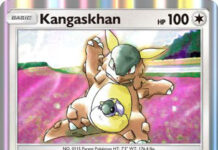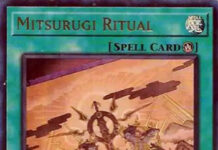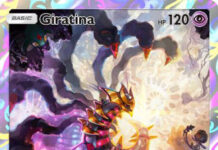You’ve probably heard of the concept or trope that people name “Planet of Hats”. In a story that only takes place on one planet, it might in fact be more of a “Kingdom of Hats”; for Magic or a similar type of property, it could be called “Plane of Hats”. The idea is that some writers identified that the easiest way to show that the main characters have entered a different place is to give everybody in the new place some kind of distinctive, impossible-to-ignore outward feature, like the same weird-looking hat. It doesn’t have to be a literal hat – Star Trek: The Next Generation‘s Klingons and their distinctive forehead ridge probably count as a Planet of Hats trope. Arguably, so do things like Tatooine and Hoth in Star Wars, if you think of their respective monoclimates as hats worn by an entire planet.
Lost Caverns of Ixalan perhaps hits the first type of hat – it’s still (perhaps implausibly) the only world in an infinite multiverse that evolved pirates who dress and act like Pirates of the Caribbean. It’s certainly the only one with a conflict that looks suspiciously like that between the Aztecs and Spain’s New World empire but with vampires and wizards, and there are few whose ecosystems have a high concentration of dinosaurs. But its existence partly averts one of the biggest traps involved in writing a Planet of Hats: stories about a place defined by a superficial characteristic most often end up being about that characteristic, one way or another.
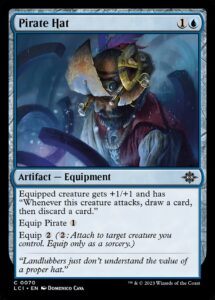
What do I mean by that? As a contrast, consider the nine expansions set on Ravnica, before Murders at Karlov Manor. You probably thought of the guilds when I mentioned the plane’s name, perhaps the sections of the multicolored and monocolored cards dedicated to them. Perhaps you thought of the fact that each block had to have a unique mechanic for each guild, and how it was obviously incredibly difficult for Wizards of the Coast to come up with ten compelling keywords every time they visited Ravnica. Looking at them in terms of flavor, every Ravnica set has been shockingly similar. The guilds are in conflict and the city is in peril – who will save it? It’s kind of ironic considering that cities tend to be diverse and dynamic, places where you can find variety and novelty. It’s doubly so if you think about how much Ravnica was originally based on Prague, one of Europe’s most cosmopolitan cities.
But keep that one in mind for such a time as we do a gameplay-free review of Murders at Karlov Manor. Wizards of the Coast definitely deserves credit for finding Ixalan another Thing to be associated with. It must have been very tempting for them to find a way to shoehorn the set into Xerex or some other plane whose visuals have been mostly underground. Plane of Hats is not, of course, how the real world works – you only have to look out the window to know this, and the conclusion is beyond unavoidable to anyone who has travelled. Any Magic set with a diverse world is more interesting and more satisfying than a Plane of Hats, and Ixalan is now firmly in the former category. Yet as we’ve seen with various sets recently, this comes along with a lot of issues.
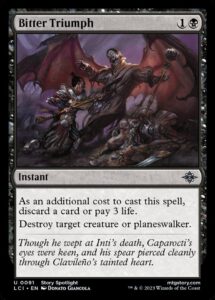
The Hollow World tropes weren’t hinted at all in the first Ixalan block – in fact, the plane’s inhabitants seem to have been just as unaware of its existence as we were. This means that the tropes all rush at you at once in Lost Caverns, which in turn means you can view it as a Plane of Hats variant. Instead of being “the Central America-inspired set”, it’s “the Hollow World set with Central America-inspired characters fighting it out”. That’s a step up from your standard Plane of Hats, but in many ways there’s still surprisingly little content here. The set is a very standard Hollow World adaptation, with clear influences from the Mystara region that gave its name to the concept. And it seems mainly to be hoping you’ll remember those references, or at least the feeling, because it just puts them out there and inserts the characters from Ixalan. There is flavor and lore that parallels the mythology of the Hopi and other Pueblo cultures from the Southwest, in the concept of the Sun Empire’s ancestors climbing up through the caves to create a new civilization, but it’s largely undeveloped on the cards. Both of these problems are exacerbated by the general wordiness of the set’s mechanics and the lack of flavor text; in itself, it is very reasonable to reuse signature mechanics, even complex ones like explore, yet the way it was implemented here has made the set’s background less accessible.
This is a real shame, because there was an awful lot of potential there. The parts based on Hopi mythology could have added a deeper dimension about the cycle of time and civilization, just as the fall of the courts did to Wilds of Eldraine. The set’s reference to the Fomori hints at a payoff for a long-running reference, going all the way back to Future Sight – this is the kind of thing you could easily use to rekindle interest from longtime players, or to draw new players into Magic’s decades of lore and mysteries.
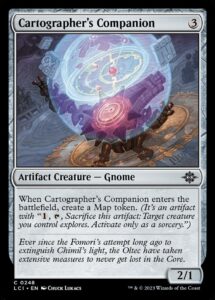
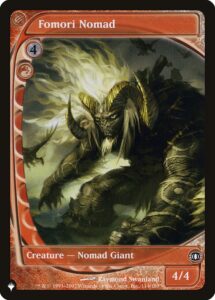
Hollow World stories are generally about the question “What lies beneath?”, both in terms of physical features to explore and in the more abstract meaning where characters embark on a journey to learn something about themselves. At their best, they are a reminder that no matter how much we know about our world, there is always more to learn, always deeper to delve. The characters of Ixalan undeniably go on such a journey in the set. I just wish we could have participated more in it, as players.

